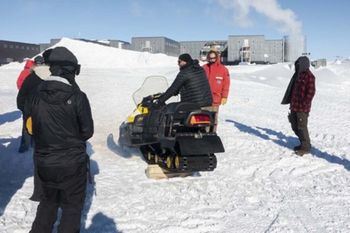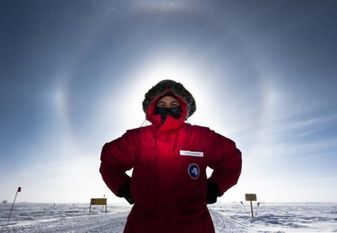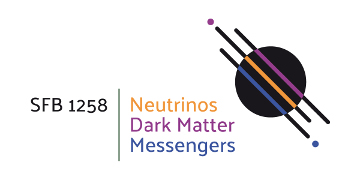Week 47: Arrival at the South Pole
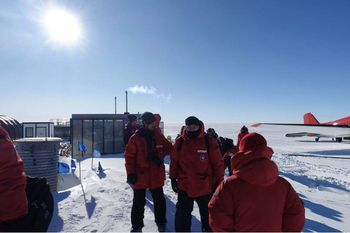
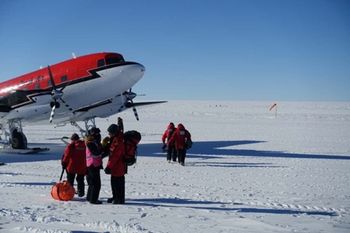
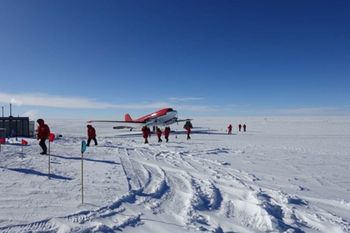
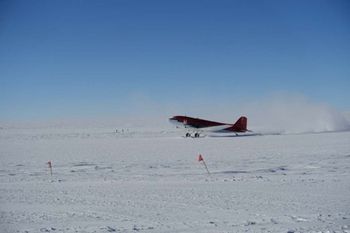
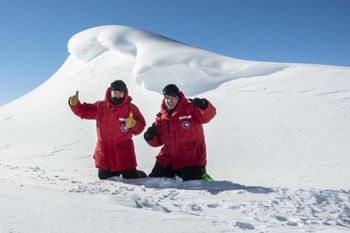
I finally arrived at the Amundsen Scott South Pole station on Tuesday, November 24. We flew in on a Basler BT-67, a small but very robust propeller machine that does not have a pressurized cabin. Because of that, the Basler can’t fly very high, but that gave us a perfect view on the transantarctic mountains that we had to fly over. In between, I got up to take photos but I quickly noticed how thin the air was! We were 14 people on the plane, the maximum number that can be transported on a Basler. The runway for aircraft with skis is right next to the Amundsen-Scott South Pole Station. From the airport we only had to walk about 100 meters to the entrance of the station, Destination Alpha, or ‘DA’ as polies call it.
The new IceCube winter-over team is complete
It was the second flight bringing new people to the Southpole since the end of the Antarctic winter. With the same aircraft I came, Yuya, one of the two previous IceCube winter-overs Josh and I am replacing now, returned to McMurdo to get back to his home country, Japan.
The next day, my colleague Josh arrived on the Basler flight number 3. The new IceCube winter-over team is now complete, but luckily, John, last year’s winter-over together with Yuya, will stay here until January to train us. So, there are three of us for most part of the Antarctic summer.
Code Yellow: Covid protocol at South Pole
Now that there is no place on Earth that is not affected by Covid-19, also the South pole has its Covid protocol. With the arrival of the first people coming from the Covid-stricken rest of the world, the South pole station moved into code Yellow: All people had to distance themselves from each other and wear nose-and-mouth masks for one week as an extra precaution to keep the station Covid-free. The isolation in San Francisco and Christchurch was quite exhausting and a bit grueling. I am glad that I made the trip to the pole without catching Corona.
John continues to train us new winter-overs. We got familiar with the IceCube Lab (ICL) and got hands-on training on the DOMHub and the servers at ICL. Almost every day, we walk out to the ICL, passing Mount ICL, a big snow drift in front of the ICL building. The wind formed it like a huge wave.
SPoT-1: Our first over-land supply transport arrived
Wednesday, December 2, marked the day of the arrival of the first South Pole over-land Traverse 1 (SPoT-1), a transport of supply coming all the 1600 km from McMurdo station travelling on a compacted snow road, also called the McMurdo-South Pole Highway. They brought as fuel for the winter. Although the travel takes about 40 days, it is much cheaper than flying in the stocks. John and I gave IceCube tours at ICL to the SPoT people on Friday and Sunday, before SPoT-1 will depart again for McMurdo next week.
Getting familiar with the IceCube Lab again
On Tuesday, we completed our familiarization with the IceCube Lab. The same day, the South Pole station switched from Covid code Yellow to Green. Hence, we weren’t required to wear face masks and didn’t have to keep physical distance between people anymore. Now, we are able to sit together again at the same table during eating times. Because the station was in code Yellow during the actual Thanksgiving holidays, celebrations at the station had been postponed. On Saturday, December 5, we finally had our Thanksgiving dinner in the galley and a dance party in the gym afterwards. The food was excellent and everybody was in a great mood!
